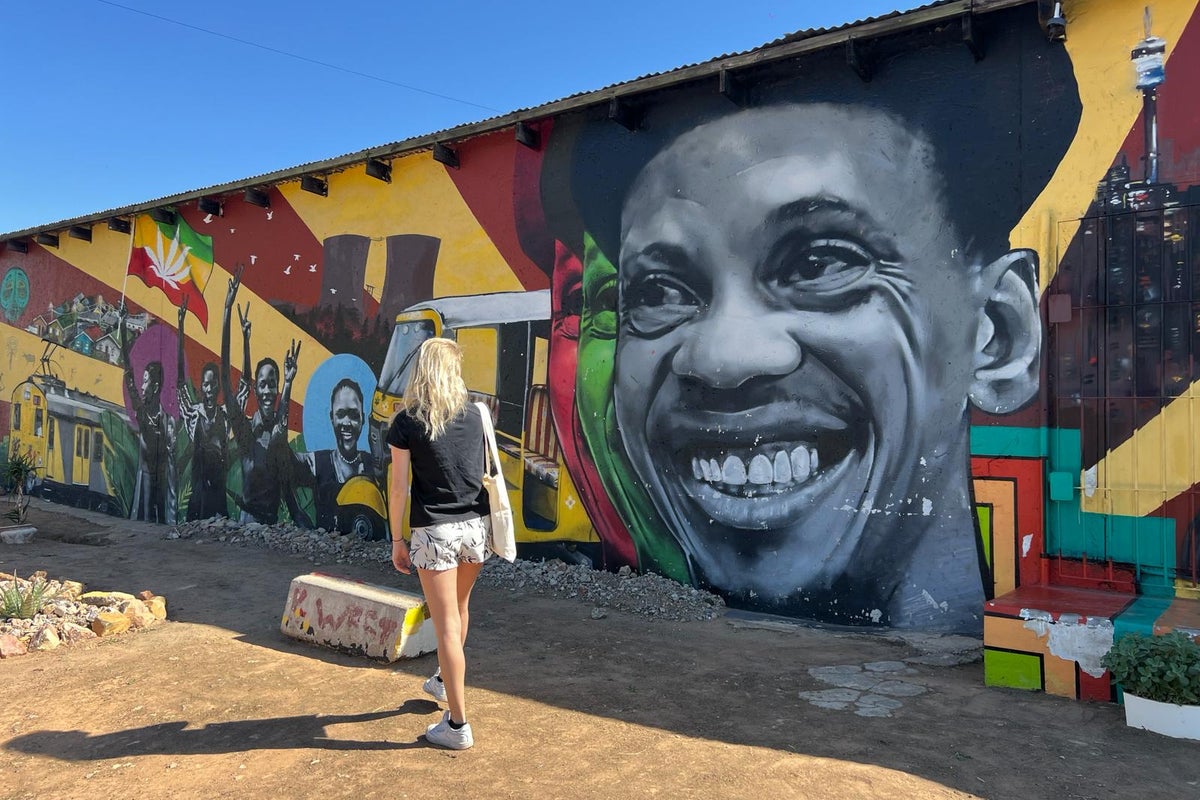Exploring the Heart of Soweto
Most days in Soweto, you’ll see tourist buses rolling through the streets. People peer out of the windows at local neighborhoods, stop off to visit Nelson Mandela’s home, and possibly browse a few stalls on Vilakazi Street. And it’s no wonder the visitors keep coming. This township in Johannesburg, home to roughly a third of the population of the city, holds huge cultural and historical significance.
Nelson Mandela, Archbishop Desmond Tutu, Walter Sisulu, and Zeph Mothopeng all lived here. It was where South Africa’s Freedom Charter was signed in 1955; it helped foster the Black Consciousness Movement in the 1970s; and was the site of the bloody Soweto uprising in 1976, a major turning point in the fight against apartheid.
But after an hour or two, most of which is confined to the inside of a bus, these tourists will leave the suburbs and trundle back to Johannesburg – then likely head out to Kruger National Park for a safari, perhaps fly down to Durban for a beach break, or maybe make their way to Cape Town to drive out to the beautiful Winelands.
Far fewer travelers will spend a full day in the township, and take the time to walk the streets, meet the communities that have grown here, and dine at the restaurants where locals eat their meals. Fewer still will decide to stay a night. But to do so is to miss the heart and soul of Soweto.
This is why Lebo’s Backpackers decided to do things differently. Set up roughly 15 years ago by Lebo Malepa, who had grown up in Soweto and wanted to encourage a type of tourism that was beneficial to the community, the guest house allows visitors to stay within the township and experience the culture of Soweto while mingling with locals and learning about day-to-day life. Rather than pressing their nose against a coach window, guests can cycle or walk around the neighborhoods, chat to the people who live there, eat at neighborhood restaurants, and then stay in comfortable rooms at the guest house or camp on the well-equipped site on the premises.
For many, Soweto conjures up images of crime and poverty, and while it is true that both are significant issues, there is far more to these neighborhoods. An acronym for South Western Township, Soweto first existed as a settlement at the start of the 20th century – although it was in the 1930s that the first township of Orlando was created as the white government hardened its segregationist stance and forced Black people out of the city and suburbs. As its residents battled against the cruelty of apartheid, Soweto became a symbol of resistance and the struggle for democracy.
The Soweto of today is very different to that of the 1970s when the world watched protests on the streets and the brutal repression by police. In fact, some have even bemoaned the gentrification of the township. While there are unpaved roads, rundown hostels, and homes with rusted corrugated roofs in neighborhoods where running water and electricity is sporadic or non-existent, there’s also a growing middle class who live in gated homes, drive fancy cars, and sip cocktails at swanky bars on Vilakazi Street. As is so often the case in South Africa, the inequality is stark – but there is a complexity and nuance to these neighborhoods that goes far beyond the slum image the city often carries.
The staff at Lebo’s aim to show this. On a spring afternoon, I stood alongside Lebo’s brother Phillip Malepa at the community gardens attached to the hostel on a hill overlooking Soweto, gazing over the vast expanse of the township across to Johannesburg’s abandoned mine dumps in the distance, where many of the city’s residents once worked.
Lebo Malepa spent much of his life working among tourists, from his early days selling T-shirts and trinkets at market stalls to renting out a room to travelers in the family home, and then buying bicycles and tuk-tuks to take visitors around. He died on Christmas Day 2021, aged just 46, but his wife Maria and family continue to run the hostel and tours, employing local Sowetans and working closely with residents to create a model that benefits the community.
Maria explains that it is important to visit the “tourist sites” like Nelson Mandela’s house; the bustling Vilakazi Street filled with stalls, shops, and cafes; and the Hector Pieterson memorial that tells the story of the 1976 Soweto uprising in which hundreds were killed (the image of the lifeless 12-year-old Pieterson being carried away from the violence is one of the most heart-wrenching of the apartheid era), but Lebo’s tours aim to go further.
By traveling by bicycle or on foot, visitors can take their time and visit places that are not well known, but tell so much about the story of Soweto and apartheid. While in the city, I was taken to see the hostels where male laborers were split up and housed when Black South Africans were brought to Soweto as a cheap labor force for the surrounding mines.
Maria explained how a visit like this helps visitors explore some of the lesser-known parts of Soweto’s history. She points to the single women’s hostel that she says acts as a reminder of the female struggle both during apartheid and after democracy, and Meadowlands where the government divided groups by race after forcibly removing them from Sophiatown in Johannesburg, which had been declared a “white” neighborhood in the 1950s.
“I think so much of your understanding of the country starts here,” she told me. “By coming here you will leave South Africa really having understood a little bit more. This sort of experience really kind of gets under your skin. I think it’s something that we can’t really touch and we don’t even quite know how to explain it.”
I was visiting South Africa with travel company Intrepid. Clinton Els, Intrepid’s regional general manager for Africa and the Middle East, explained to me that the company felt it was important not only to enable their travelers to experience this side of the city, but also to ensure it was done in an authentic way that benefits the local communities.
He added: “It saddens me that some tour companies treat Soweto like an attraction by just viewing it through the windows of a bus before moving on to the next point of interest. These are real people, living in a real community. It’s important for people to experience the ‘real’ Soweto – not just certain streets and flashy houses, but the areas that’ve been somewhat ignored and forgotten.”
After exploring the city – including a stop at a local restaurant for a snack of beef cheek and a maize dish called pap – we join other travelers at the backpackers hostel to share a lunch of stews and curries with ingredients sourced from the market and community gardens, cooked the traditional way over an open fire. Meals are served in the outdoor restaurant, which is a revamped former dump site that has been turned into a very pleasant park.
Beyond the hostel’s grounds, you will also find good local food at the Disoufeng Pub & Restaurant in Meadowlands and Native Rebels in Jabavu, or you can watch performances at Sawubona Music Jam, a weekly live music event held every Tuesday in Chiawelo.
While in Soweto I also spoke with Joseph Tshehla, one of Intrepid’s guides who lives in the township with his young son. He told me: “Soweto is home to the African saying Ubuntu – ‘I am what I am because of who we all are.’ In Soweto, locals make sure the door is always open for neighbors to come knock when they need sugar.”
He adds: “You need to walk through the town to get a feel for being part of the community and understand the history. Just driving through won’t let you fully experience the culture.”
Maybe a day or two here will only let you scratch the surface and get a taste of what Soweto is truly like (in fact, Maria recommends spending a week or more). But it is a taste that will allow you to see beyond the crime statistics and news reports. Most importantly, you can speak to those who call the city their home, share meals, and listen to music – and that’s something you certainly can’t experience through a bus window.







